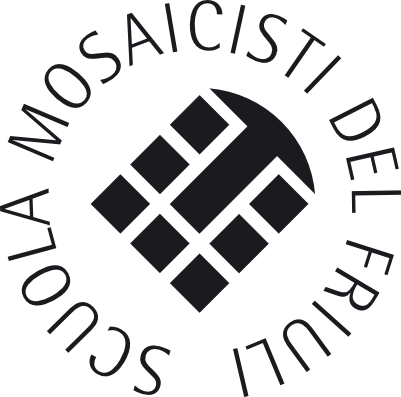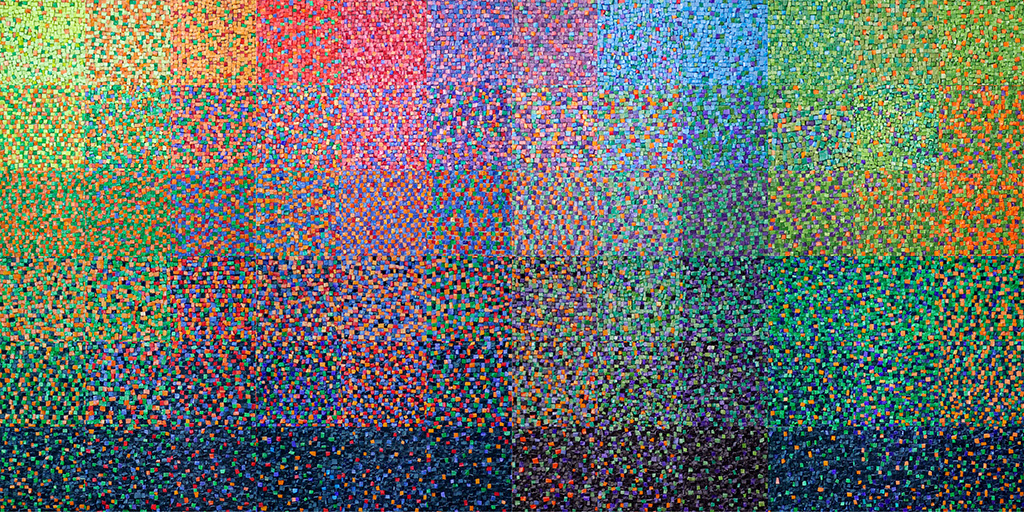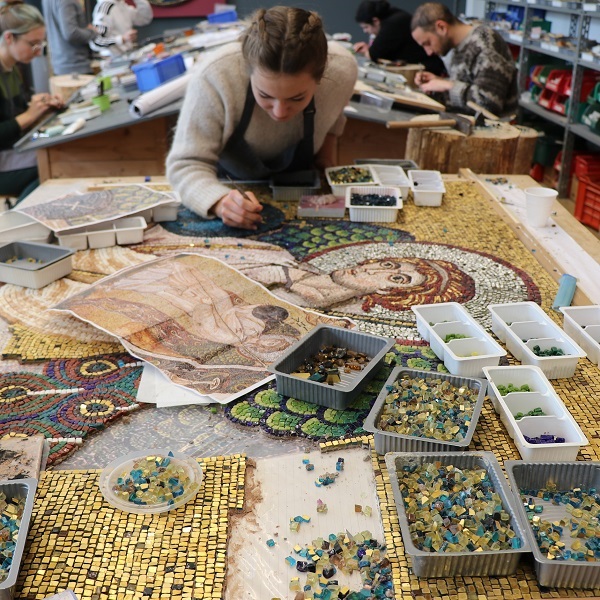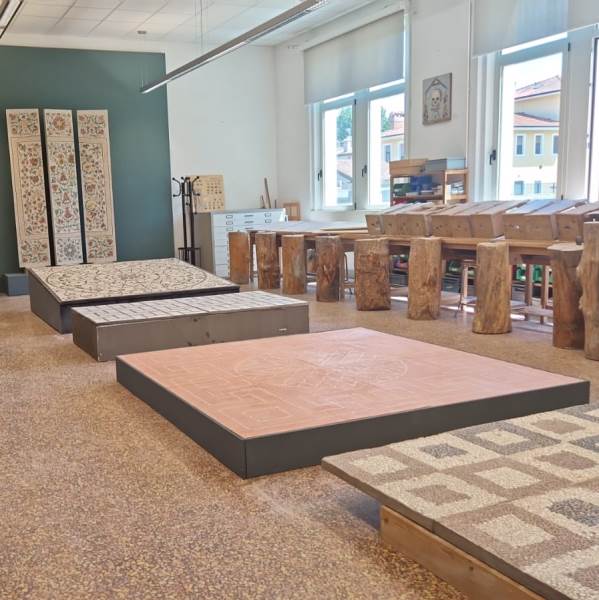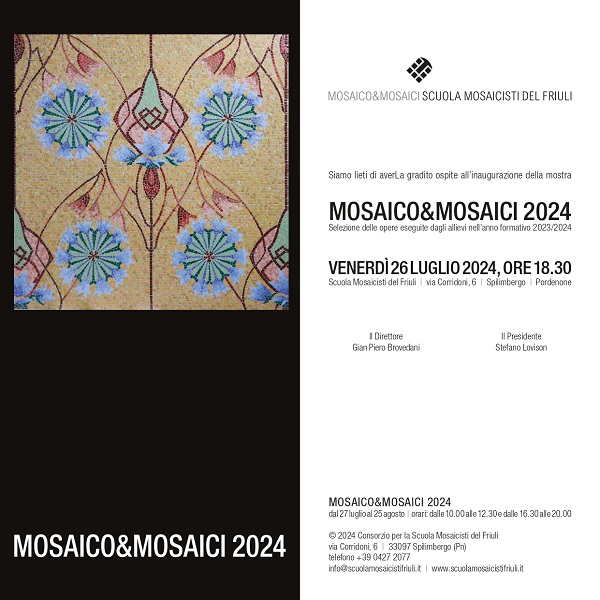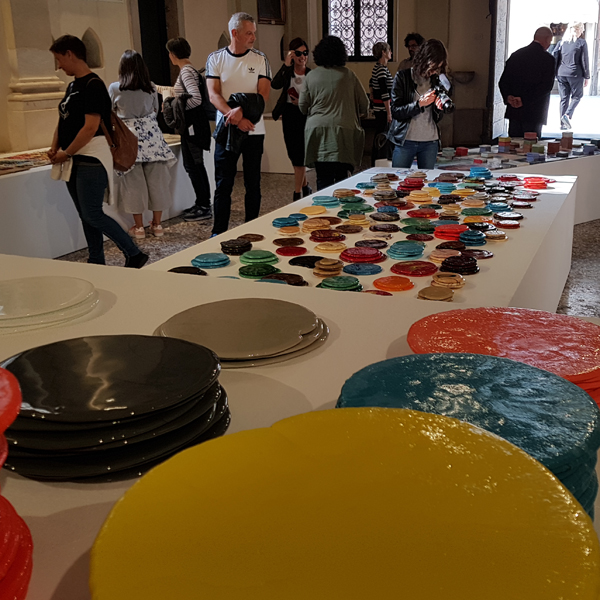
The balance sheet of the Scuola Mosaicisti del Friuli in Mosart was positive
The participation of the Scuola Mosaicisti del Friuli in Mosart – Spilimbergo mosaic art Festival concludes with a more than positive balance sheet confirmed not only by the number of visitors, but above all by the interest and enthusiasm shown by them.
The extraordinary opening of the School, with free guided tours, to which, in conjunction with the event, those of paid groups already previously booked were added, offered the opportunity to see the classrooms and laboratories, talk with the masters mosaicists, admire the works created by the students in over ninety years of activity. The building itself represents a piece of history that tells of the desire in the Thirties to give education and training to young people who would then bring the “local know-how” both in the mosaic and on the terrace all over the world. In the school’s courtyard you can admire the recent redevelopment works of the external staircase and the high flue: artistic coatings of a certain structural complexity performed by the students themselves as workshops.
There was no lack of visitors even to CHROMOS 2. I colori d’autore, exhibition of works created by the students of the Mosaic School of Friuli based on designs by Getulio Alviani, Diego Birelli, Alighiero Boetti, Marco Bravura, CaCo3, Carlo Ciussi, Marco De Luca , Piero Dorazio, Gillo Dorfles, Ennio Finzi, Kwon Sun Kwan, Riccardo Licata, Hyungmin Moon, Nane Zavagno. The exhibition, set up in the Galleria della Scuola and presented on the evening of Saturday 28 by director Gian Piero Brovedani, investigates the relationship between the artist who designed the sketches and the mosaic artist who transfers the expressive form through the combination and positioning of the tiles. In the Gallery there are also two unusual proposals to learn about and read the mosaic: Innesti, a refined collection of mosaic-decorated trays, and Mosaici filatelici, a collection of postcards and stamps celebrating the mosaic in the world, by collector Bruno Marchesin. These three exhibitions will remain open during school hours.
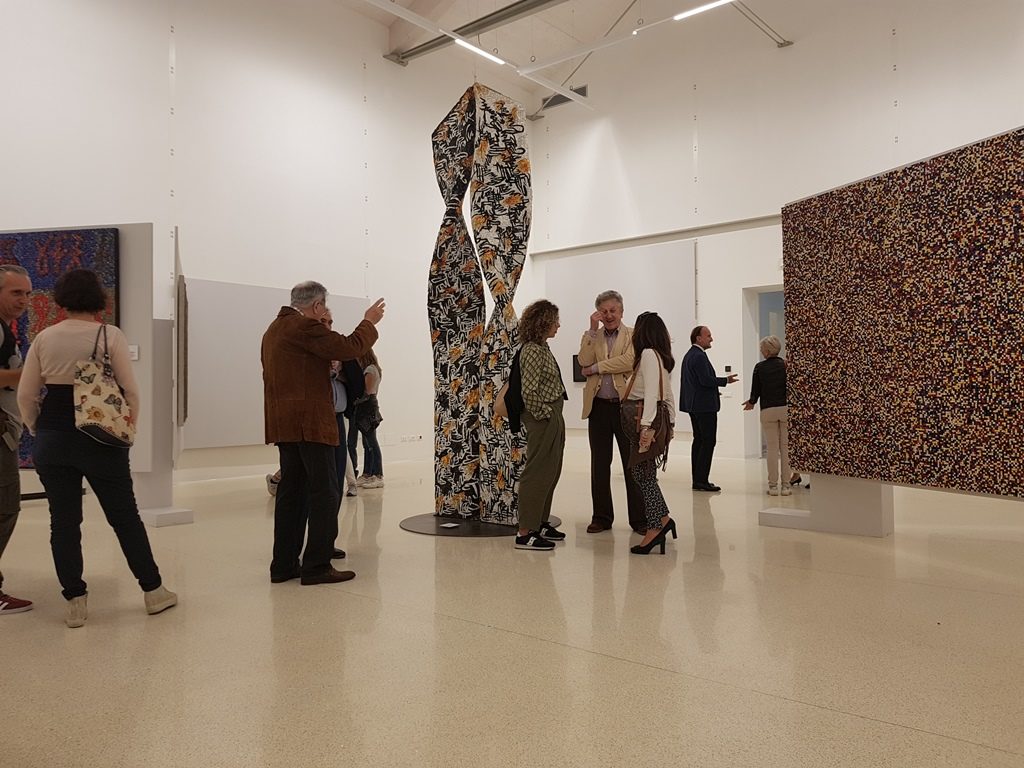
The Mosaic for Children workshop was unexpectedly successful. Mosaic for children held at Saturday 28 in the Loggia of Piazza Duomo. The mosaic teachers Giulia Palamin, Sara La Fiura and Silvia Biancolino followed more than seventy participants who committed themselves, getting their hands dirty, to make their own little mosaic panel. It was not trivial to glue tiles: the teachers pointed out the variety of shapes, sizes and colors explaining the importance of light vibration and combinations of different shades.
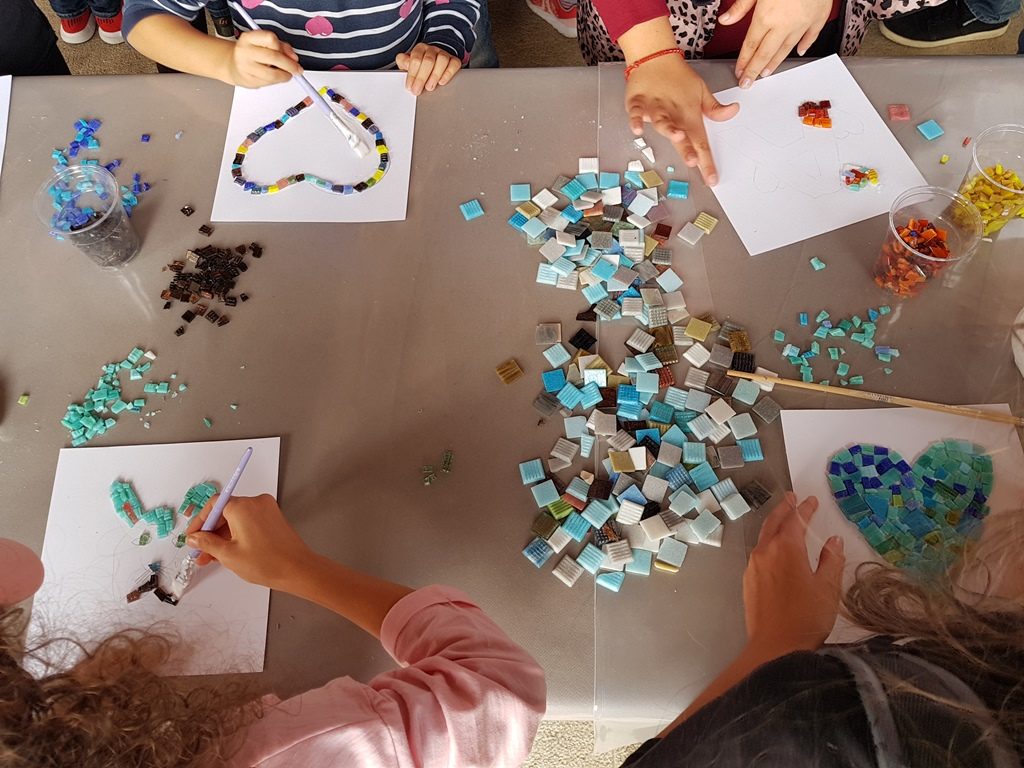
In Piazza Garibaldi behind the monumental S, a work performed by the Mosaic School of Friuli with the intervention of the mosaic artists Sara La Fiura and Silvia Biancolino and which constitutes the first letter of the word “Spilimbergo”, there is the church of San Giovanni Battista kindly available to host the CHROMOS 1 exhibition. CHROMOS 1. Il lessico del colore. Here the reflection focused on the materials that make up the mosaic and in particular on the enamels, in glass, the Venetian ones made in the traditional way at high temperatures and the sintered ones in recycled glass with a low-temperature and therefore eco-sustainable production process. The enamels on display are both produced by Spilimbergese companies: the Venetian enamels by Mario Donà & Figli and the “ecosmalti” by Federico Morassutti. A range of colors and brightness that can be easily appreciated thanks to the simple but visually striking display, confirmed by the photographs taken by the visitors.
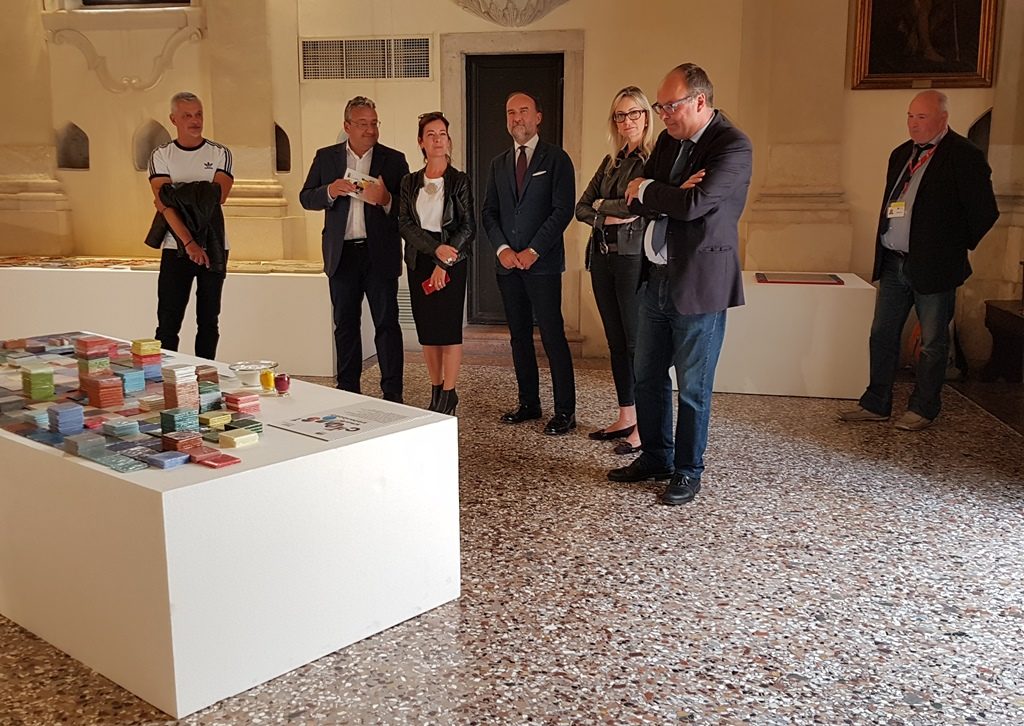
Sunday, September 29, the Mosaic School was the protagonist of two meetings at Palazzo Tadea. Sunday, September 29, the Scuola Mosaicisti del Friuli was the protagonist of two meetings at Palazzo Tadea. The one in the morning entitled Confrontation training, moderated by the architect Paolo Coretti, saw director Gian Piero Brovedani conversing with Paola Babini teaching coordinator of the Academy of Fine Arts of Ravenna and with Giovanni Alvich and Francesco Urso, professors of the Liceo Artistico Mario D’Aleo of Monreale. The multi-word reflection on the three types of mosaic training in the Italian scene has revealed the difficulty, inherent in the very definition of mosaicist in the balance between artist and craftsman, of structuring an adequate course of study. The Scuola Mosaicisti del Friuli, which graduates as “mosaic masters”, presents a combination of theoretical and particular lessons from the beginning. Especially the hours dedicated to the workshop activity allow to train professionals able to respond to every need and desire of the client. A school, as the director wanted to highlight, “which constitutes a unique system in Italy capable of qualifying young people in this ancient art that finds correspondence in the contemporary world. An example that could be useful to many other schools ”.
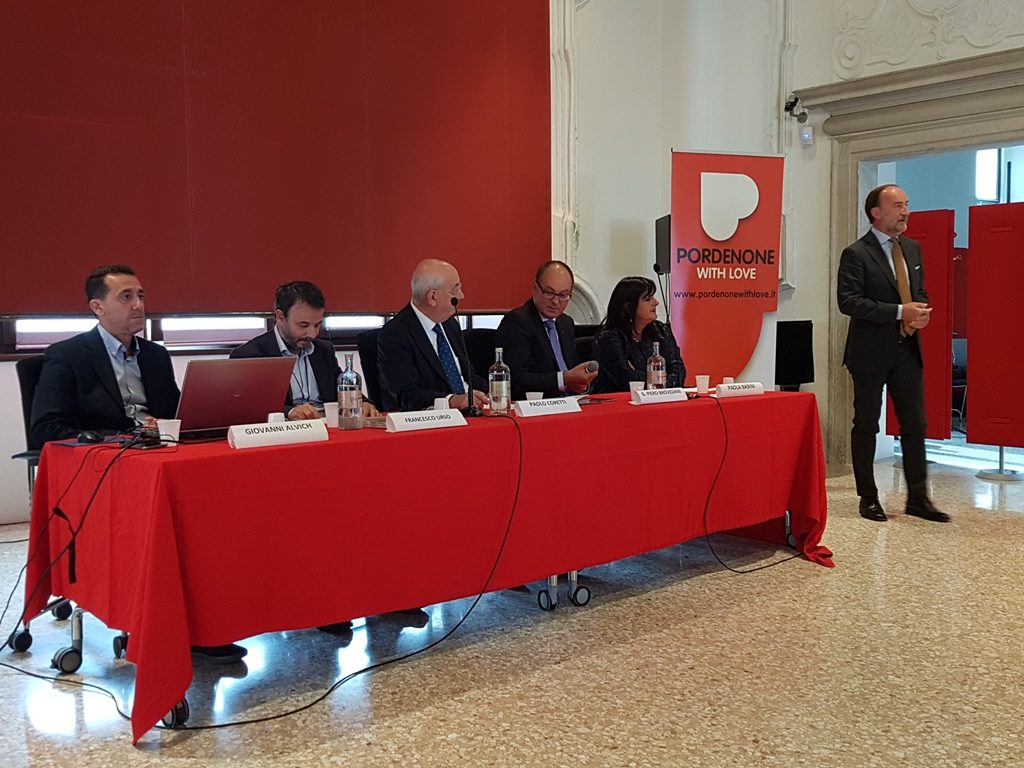
In the afternoon, the meeting organized by Confartigianato Imprese di Pordenone entitled Esportare l’artigianato. È possibile! attended by the president of the Mosaic School of Friuli, Stefano Lovison, highlighted the need to maintain the quality of the mosaic product to be successful on the market, a market that obviously goes beyond national borders.


